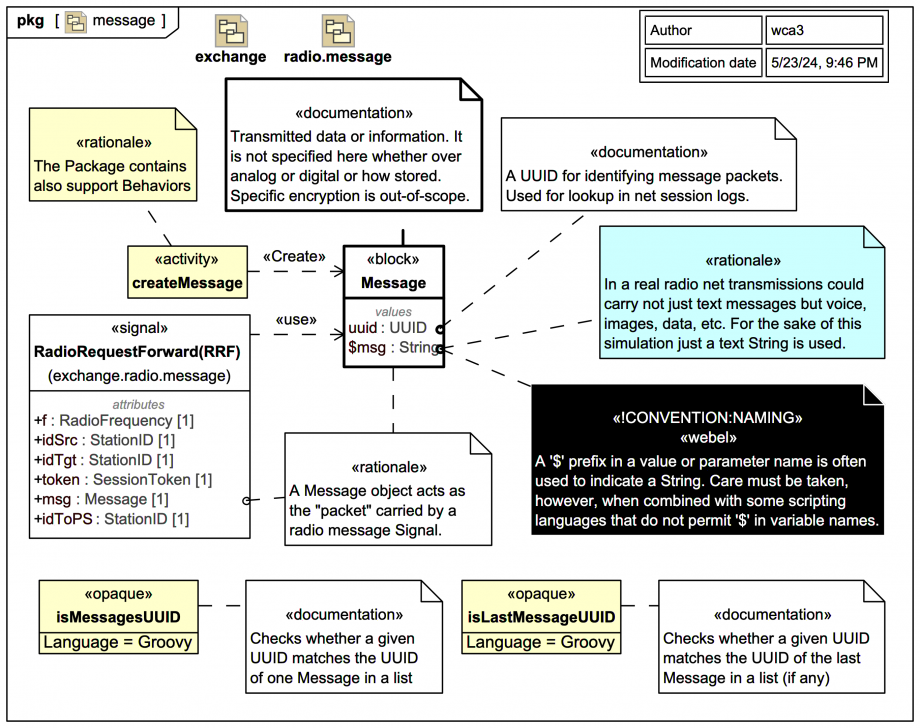Tags and keywords
Message block "packet" that radio transmissions may carry.Modelling and style
RadioRequestForward(RFF) to Message for attribute msg:Message because:
A Message block is a very simple model of transmitted data or information. It is not specified here whether over analog or digital or how stored, and specific encryption is out-of-scope.
In a real radio net transmissions could carry not just text messages but voice, images, data, etc. For the sake of this simulation just a text String is used, denoted $msg.
$msg to distinguish it from msg used for a Message object. Care must be taken, however, when using scripting languages that do not permit '$' in variable names; Groovy handles a '$' in variables names just fine.A Message object acts as the "packet" carried by a RadioMessage Signal, as shown for a RadioRequestForward(RFF) Signal, which is a request from a Participating Station (PS) to the Net Control Station (NCS) to forward the contained message to another Participating Station (PS).
Each Message object is identified by a UUID, which may be used for lookup in net session logs.
The 'message' Package also contains some supporting utility Behaviors, such as an Activity createMessage and Goovy-based OpaqueBehaviors for interrogating a list of Message items against a UUID.


